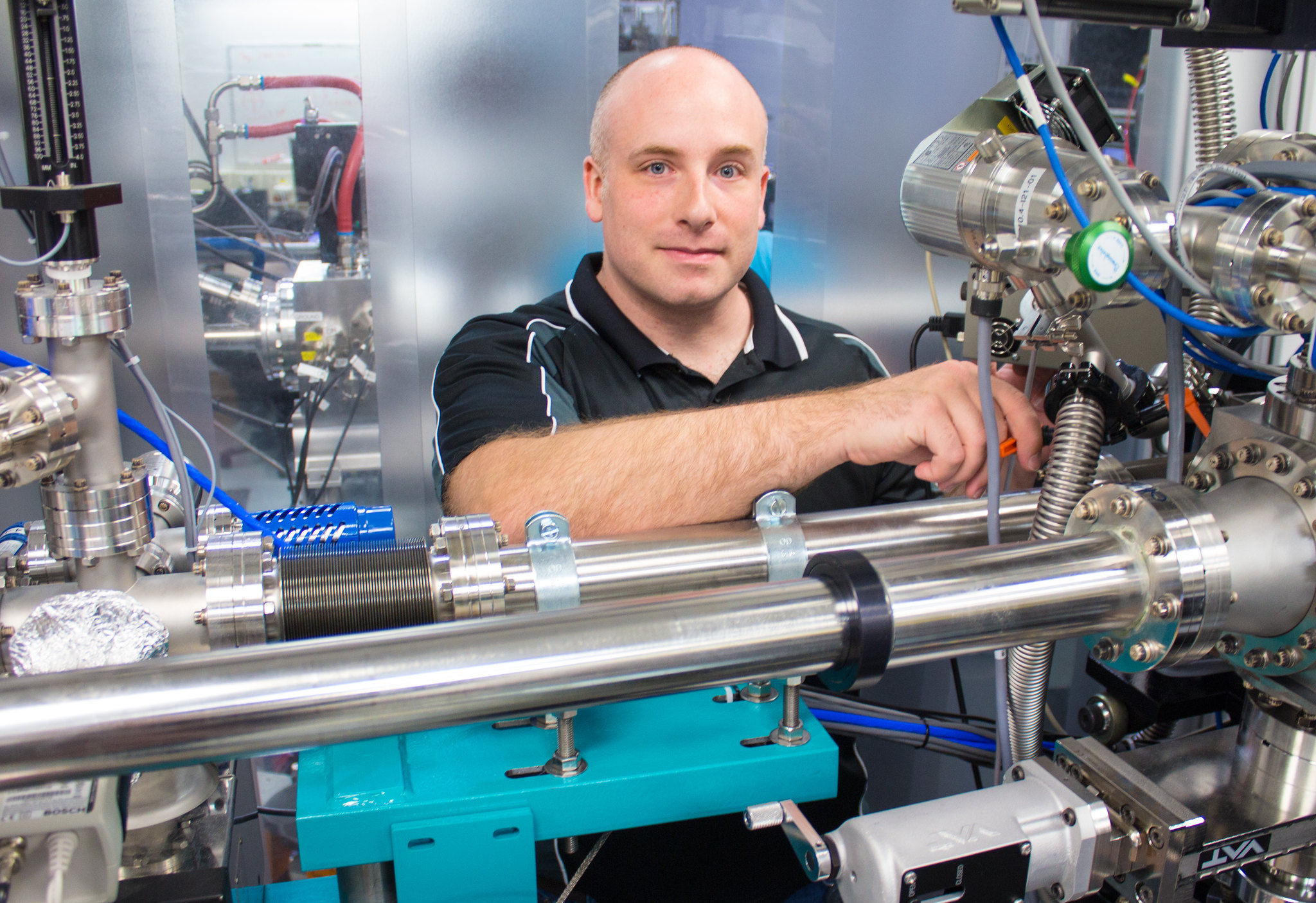Stronger, Better, Solar Cells
About half of Canada’s residential electricity needs could be met if solar panels were installed on the roofs of residential buildings. At a single atom thick, graphene was the first 2D crystal ever discovered. It is a great candidate for solar cells because it is transparent, stronger than steel, and a better conductor than copper. It also can’t corrode. Researchers from the University of Saskatchewan aim to harness these qualities into a more efficient solar cell by modifying the material with oxygen to make a better charge collector. To do this, they take a close look at graphene oxide’s unique electronic signature.
By Victoria MartinezSASKATOON – There remains a lot to learn on the frontiers of solar power research, particularly when it comes to new advanced materials which could change how we harness energy.
Under the guidance of Canada Research Chair in Materials Science with Synchrotron Radiation, Dr. Alexander Moewes, University of Saskatchewan researcher Adrian Hunt spent his PhD investigating graphene oxide, a cutting-edge material that he hopes will shape the future of technology.
To understand graphene oxide, it is best to start with pure graphene, which is a single-layer sheet of carbon atoms in a honeycomb lattice that was first made in 2004 by Andre Geim and Kostya Novoselov at the University of Manchester – a discovery that earned the two physicists a Nobel Prize in 2010.
“It is incredibly thin, therefore it is incredibly transparent. It also has extremely high conductivity, it’s much better than copper, and it’s extremely strong, its tensile strength is even stronger than steel,” Hunt said.
“Air doesn’t damage it. It can’t corrode, it can’t degrade. It’s really stable.”
All of this makes graphene a great candidate for solar cells. In particular, its transparency and conductivity mean that it solves two problems of solar cells: first, light needs a good conductor in order to get converted into usable energy; secondly, the cell also has to be transparent for light to get through.
Most solar cells on the market use indium tin oxide with a non-conductive glass protective layer to meet their needs.
“Indium is extremely rare, so it is becoming more expensive all the time. It’s the factor that will keep solar cells expensive in the future, whereas graphene could be very cheap. Carbon is abundant,” said Hunt.
Although graphene is a great conductor, it is not very good at collecting the electrical current produced inside the solar cell, which is why researchers like Hunt are investigating ways to modify graphene to make it more useful.
Graphene oxide, the focus of Hunt’s PhD work, has oxygen forced into the carbon lattice, which makes it much less conductive but more transparent and a better charge collector. Whether or not it will solve the solar panel problem is yet to be seen, and researchers in the field are building up their understanding of how the new material works.
Using X-ray scattering techniques at the REIXS and SGM beamlines at the Canadian Light Source, as well as a Beamline 8.0.1 at the Advanced Light Source, Hunt set out to learn more about how oxide groups attached to the graphene lattice changed it, and how in particular they interacted with charge-carrying graphene atoms.

“Graphene oxide is fairly chaotic. You don’t get a nice simple structure that you can model really easily, but I wanted to model graphene oxide and understand the interplay of these parts.”
Previous models had seemed simplistic to Hunt, and he wanted a model that would reflect graphene oxide’s true complexity.
Each different part of the graphene oxide has a unique electronic signature. Using the synchrotron, Hunt could measure where electrons were on the graphene, and how the different oxide groups modified that.
He showed that previous models were incorrect, which he hopes will help improve understanding of the effects of small shifts in oxidization.
Moreover, he studied how graphene oxide decays. Some of the oxide groups are not stable, and can group together to tear the lattice; others can react to make water. If graphene oxide device has water in it, and it is heated up, the water can actually burn the graphene oxide and produce carbon dioxide. It’s a pitfall that could be important to understand in the development of long-lasting solar cells, where sun could provide risky heat into the equation
More research like this will be the key to harnessing graphene for solar power, as Hunt explains.
“There’s this complicated chain of interreactions that can happen over time, and each one of those steps needs to be addressed and categorized before we can make real progress.”
Acknowledgements: The authors acknowledge the efforts of Dmitriy Dikin and his research group at Northwestern University, as they prepared the samples. The authors acknowledge support by the Natural Sciences and Engineering Research Council of Canada (NSERC), the Canada Research Chair program. The Canadian Light Source is supported by NSERC, the National Research Council (NSC) Canada, the Canadian Institutes of Health Research (CIHR), the Province of Saskatchewan, Western Economic Diversification Canada, and the University of Saskatchewan. The Advanced Light Source is supported by the Director, Office of Science, Office of Basic Energy Sciences, of the U.S. Department of Energy under Contract No. DE-AC02–05CH11231. Finally, the authors acknowledge Compute Canada, because the calculations presented in this work were performed on the Grex high-performance computing cluster, which is part of the Westgrid network.
Hunt, Adrian, Ernst Z. Kurmaev, and Alex Moewes. "A Re?evaluation of How Functional Groups Modify the Electronic Structure of Graphene Oxide."Advanced Materials 26, 4870-4874 (2014).
DOI: 10.1002/adma.201401300
